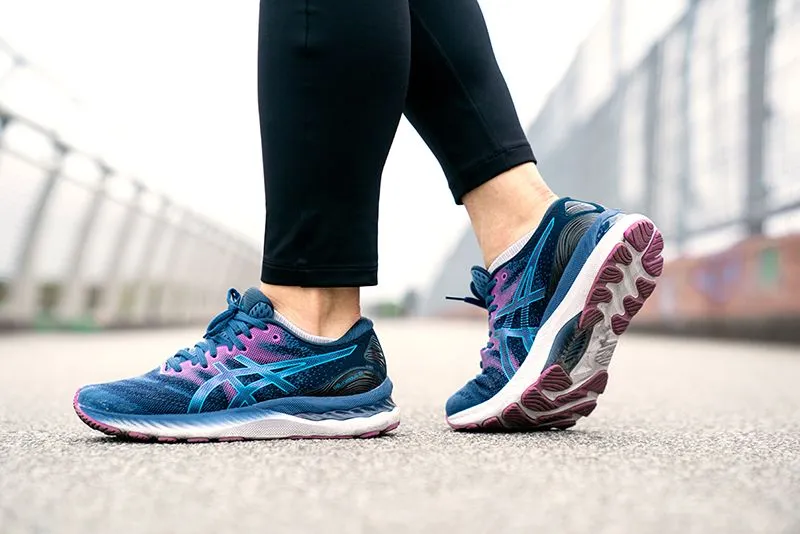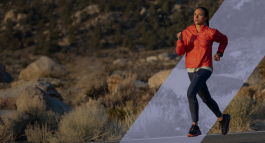
What is the Gait Cycle? - Understanding the phases
February 20, 2025
Delve into the intricacies of the gait cycle with ASICS. Understand its phases and how they impact your running biomechanics and performance.
If you’ve ever observed other people running - be that on treadmills, at a park run, or on TV - you’ve probably noticed they all have slightly different ways of moving.
Some take bigger, heavier strides, others seem to glide along with short and light steps. But despite all the variations between individuals, the fundamental mechanics of the movement are pretty much the same. This movement is called the gait cycle.
The human gait cycle is one of the many things that make us unique (even compared to other animals that walk on two feet), and allows us to move at speed very efficiently.
Being aware of gait cycles when you’re running can be helpful. Let’s learn more about this part of human biomechanics, and what it means for you.
What is gait cycle?
The gait cycle can be defined as: “the period from initial contact of one foot until the initial contact of that same foot”.
In other words, it describes the entire movement of one leg while you’re running, from the moment it touches the ground, leaves the ground, moves through the air, then touches the ground again.
Why’s it useful for runners to know about gait cycles?
Learning about the human gait cycle can be helpful for runners of any experience level. Here are some reasons why it’s helpful:
- Reduce injury risk: A common cause of running injuries is overstriding during the gait cycle. Some runners swing their legs too far forward, which can cause knee and hip issues. Knowing about the gait cycle can help you adjust your movements.
- Changing style: Sometimes, runners may choose to make adjustments to their running posture (e.g. to increase cadence). If you’re adjusting your running style for any reason, it’s helpful to know about the gait cycle and how this affects foot and leg movement.
- Pronation: Pronation describes your foot’s movement during the ground contact phases of gait. There are various kinds of shoes that are designed for different types of pronation.
Related: What is pronation?
Human gait phases when running
The human gait cycle changes quite a lot when you shift from walking to running. In this article, we’re just focusing on running gait.
There are two broad phases of gait when running:
- Stance phase: This is when your foot is in contact with the ground. It takes up about 60% of the running gait cycle, according to an overview in a sports science journal.
- Swing phase: This is the time your foot is moving through the air. It takes up about 40% of the gait cycle.
Human gait phases can be broken down into sub-phases too.
Sub phases of the stance phase
There are three sub-phases of the stance phase:
- Initial contact: Your knee flexes and your foot comes into contact with the ground. Depending on your running style and pronation, the first contact could be on the rearfoot, midfoot or forefoot. The initial contact stage cushions the force of the foot strike (it’s estimated that force equivalent to 2.5 times your bodyweight passes through your legs when running).
- Midstance: Most of your foot is now in contact with the ground, and the leg and foot provide a stable platform for your body as it moves forward. Your knee is still slightly bent.
- Propulsion: This is the final part of the stance phase. Your hip and knee start to extend and your heel lifts off the ground. Finally, at toe off, your foot comes off the ground entirely.
Sub phases of the swing phase
The swing phase of the human gait cycle describes your leg’s motion when not in contact with the ground It can also be broken down into three sub-phases:
- Knee and hip extension: First, your knee starts to flex, and your hips reach maximum extension behind you.
- Peak knee flexion: Your knee continues to bend, and your lower leg swings up behind you. At the same time, your hip flexors start to contract, to pull your leg forward.
- Peak hip flexion: Your hip flexor muscles contract, lifting the thigh up in front of you. Your knees then extend, allowing your foot to swing forward. Your foot lands just in front of your centre of mass. The gait cycle then starts again.
How to do gait cycle analysis
There are many reasons you might want to have your gait analysed. You might have recurring injuries that could be related to overstriding. You might be trying to increase your cadence. Or you may be looking to learn more about your pronation when choosing running shoes.
The easiest way to analyse your gait is to ask a friend to film you from the side while running on a treadmill. Most smartphones now allow you to replay video in slow motion, so you can understand your own personal gait.
It can also be helpful to speak to a running coach or physio if you think your gait might be causing discomfort - they’ll do their own analysis. If you visit an ASICS running store, staff there can also assess your gait.
In depth: How to do gait analysis
Running shoes and gait cycles
Your running shoes can have an effect on your gait cycle. Different kinds of running shoes - and their features - affect the gait cycle in different ways.
- Neutral running shoes: These shoes have most cushioning in the heel and mid foot, and are fairly flexible in the mid foot. They’re suited to the gait of people with a neutral running style. Discover neutral running shoes.
- Stability running shoes: These shoes are designed for people who overpronate. They offer more cushioning and will include extra support in the midfoot area. This helps reduce force on your ankles and legs if your feet don’t come fully into contact with the ground. Discover stability running shoes.
- Fast running shoes: Some running shoes are built for running at higher speeds. They may have more curved soles, carbon plates or ‘springy’ cushioning, which can be helpful during the stance phase of the gait cycle. Discover fast running shoes.
- Shoe weight: The lighter your running shoes are, the easier the swing phase is. Particularly on long runs, just a few grams difference can have a big effect on fatigue.
- Cushioning: After analysing your own gait cycle, you might learn you have a more pronounced rear foot running pattern. You might therefore choose shoes with more cushioning in the heel.
Related: What is the impact of gait on running shoe choice?
Being aware of your gait cycle
Learning about your own gait cycle can be really beneficial as a runner. Whether it ensures you avoid overstriding, means you can adapt your footstrikes to run with higher cadence, or helps you choose the best shoes for you, it’s a valuable factor to consider on your running journey.
